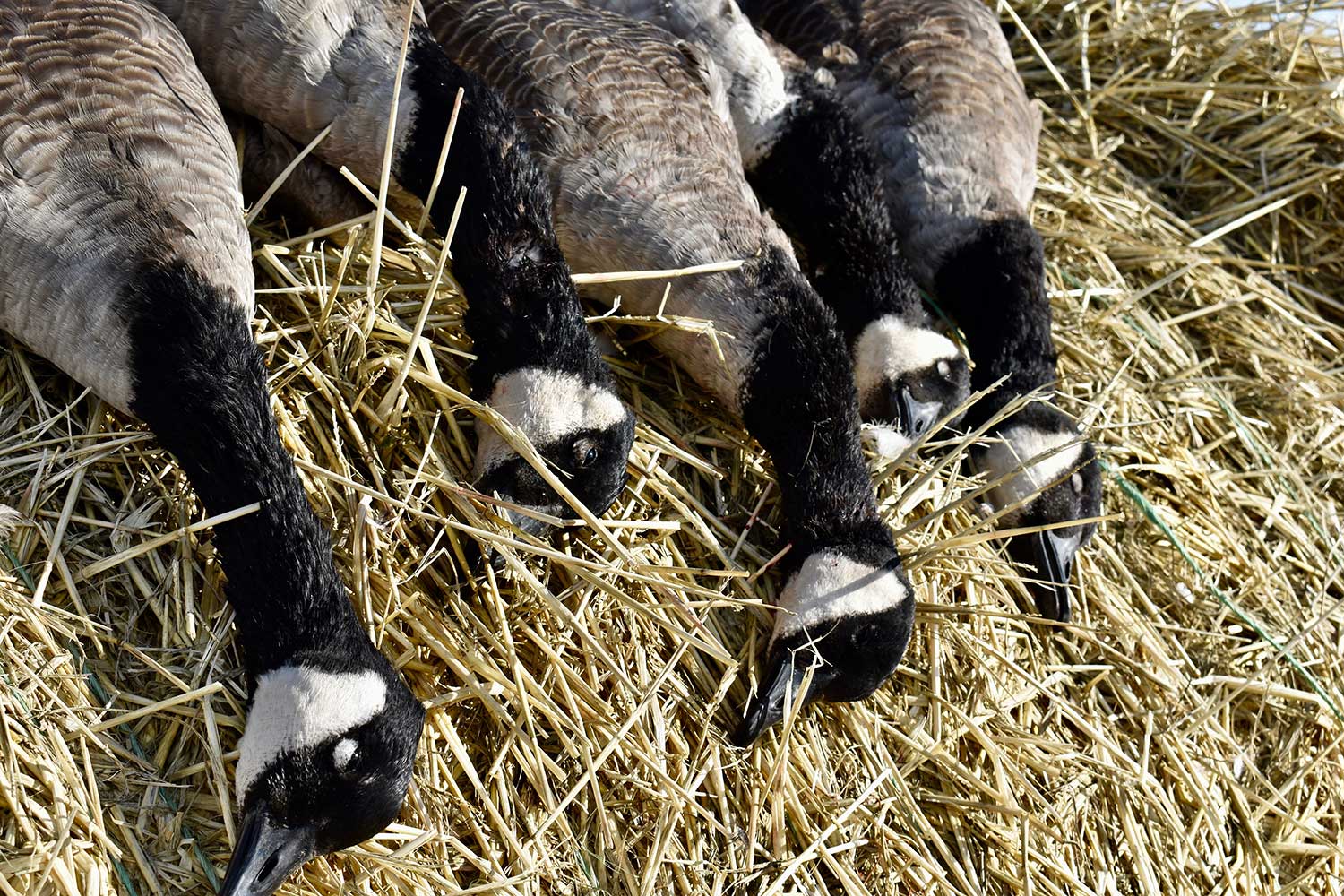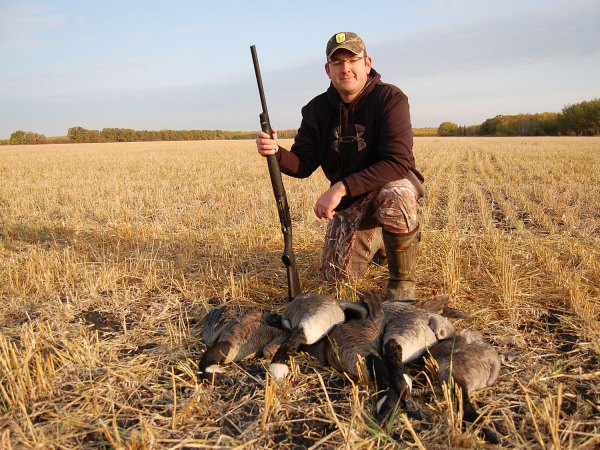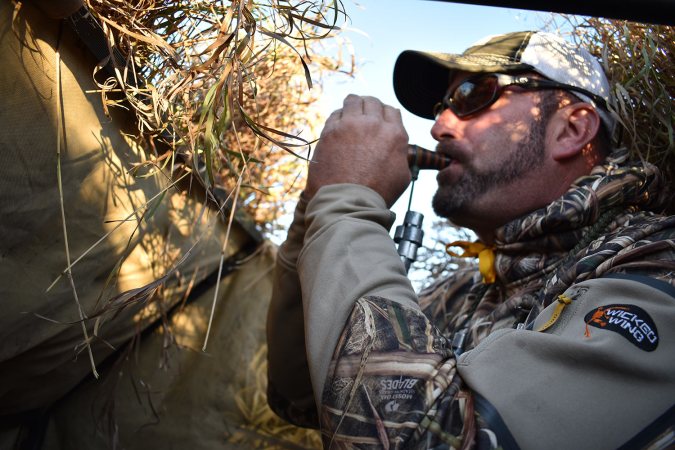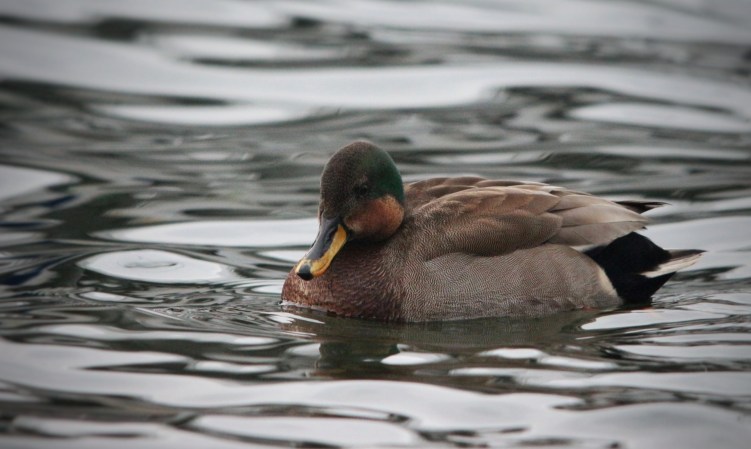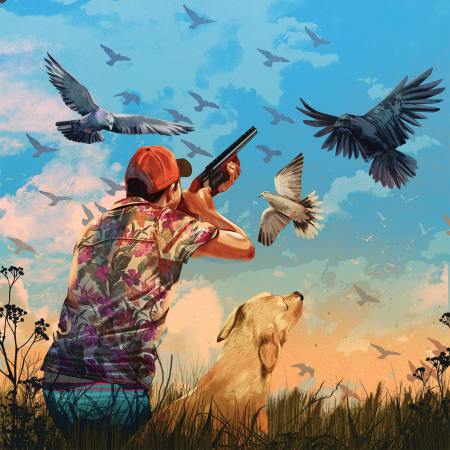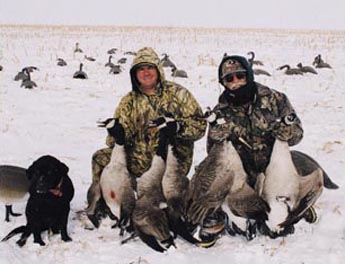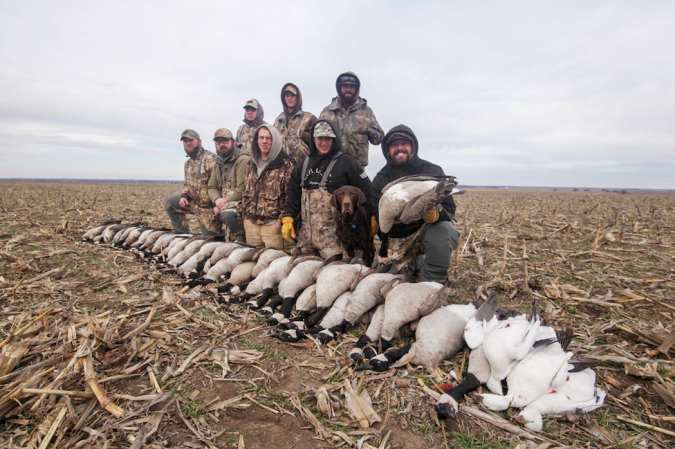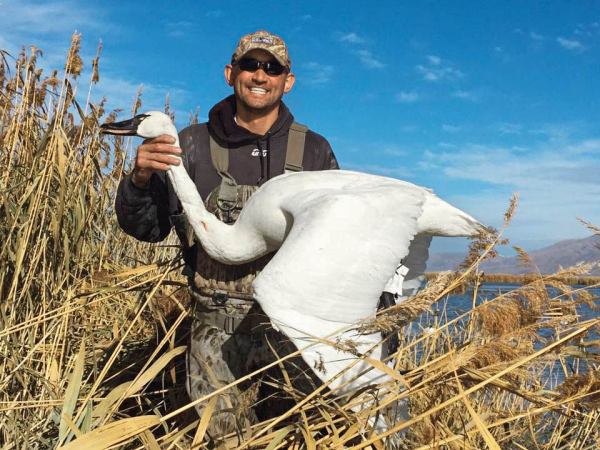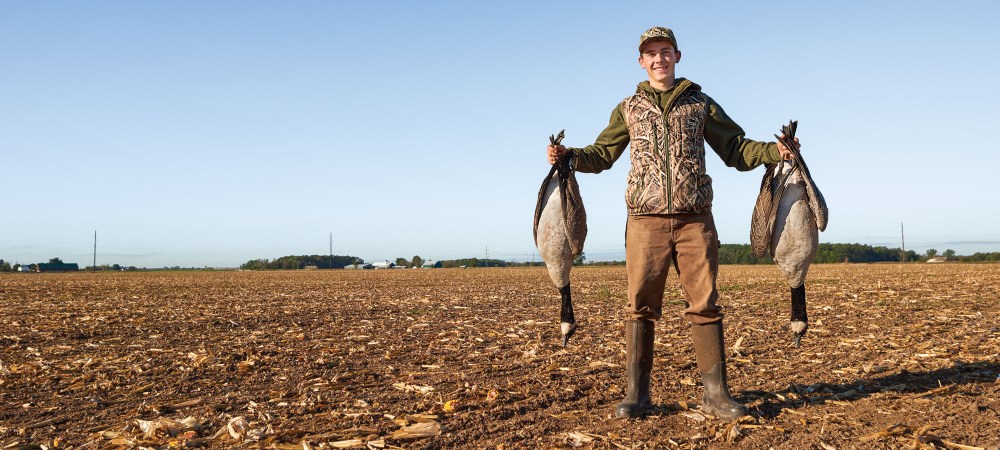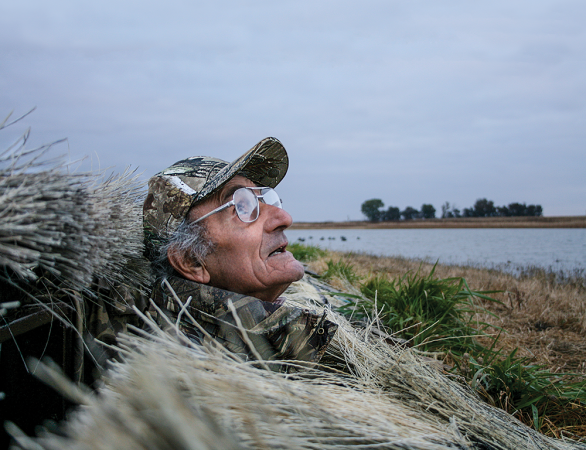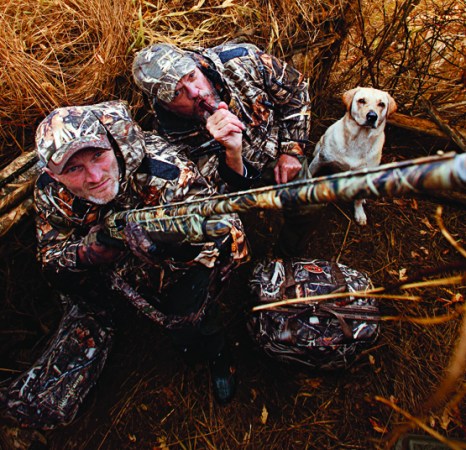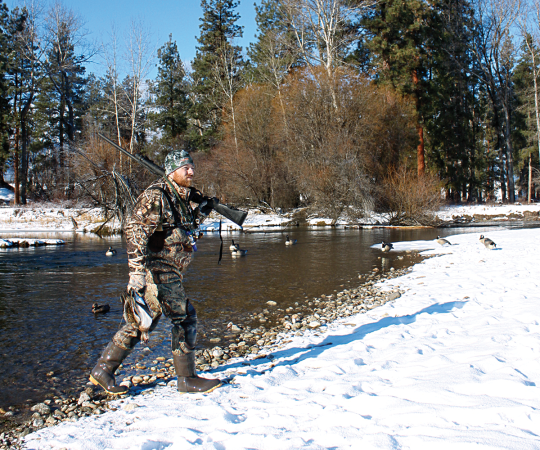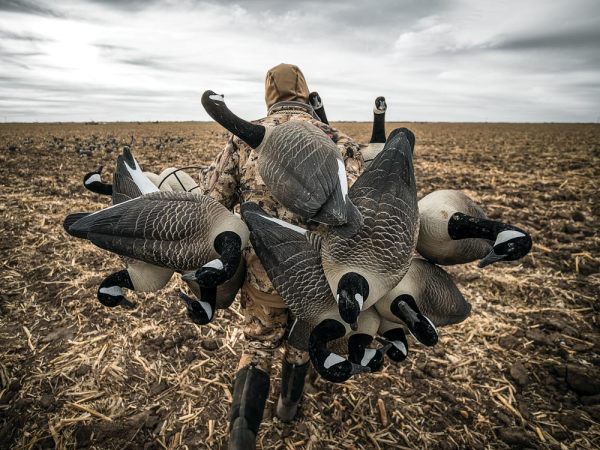We may earn revenue from the products available on this page and participate in affiliate programs. Learn More ›
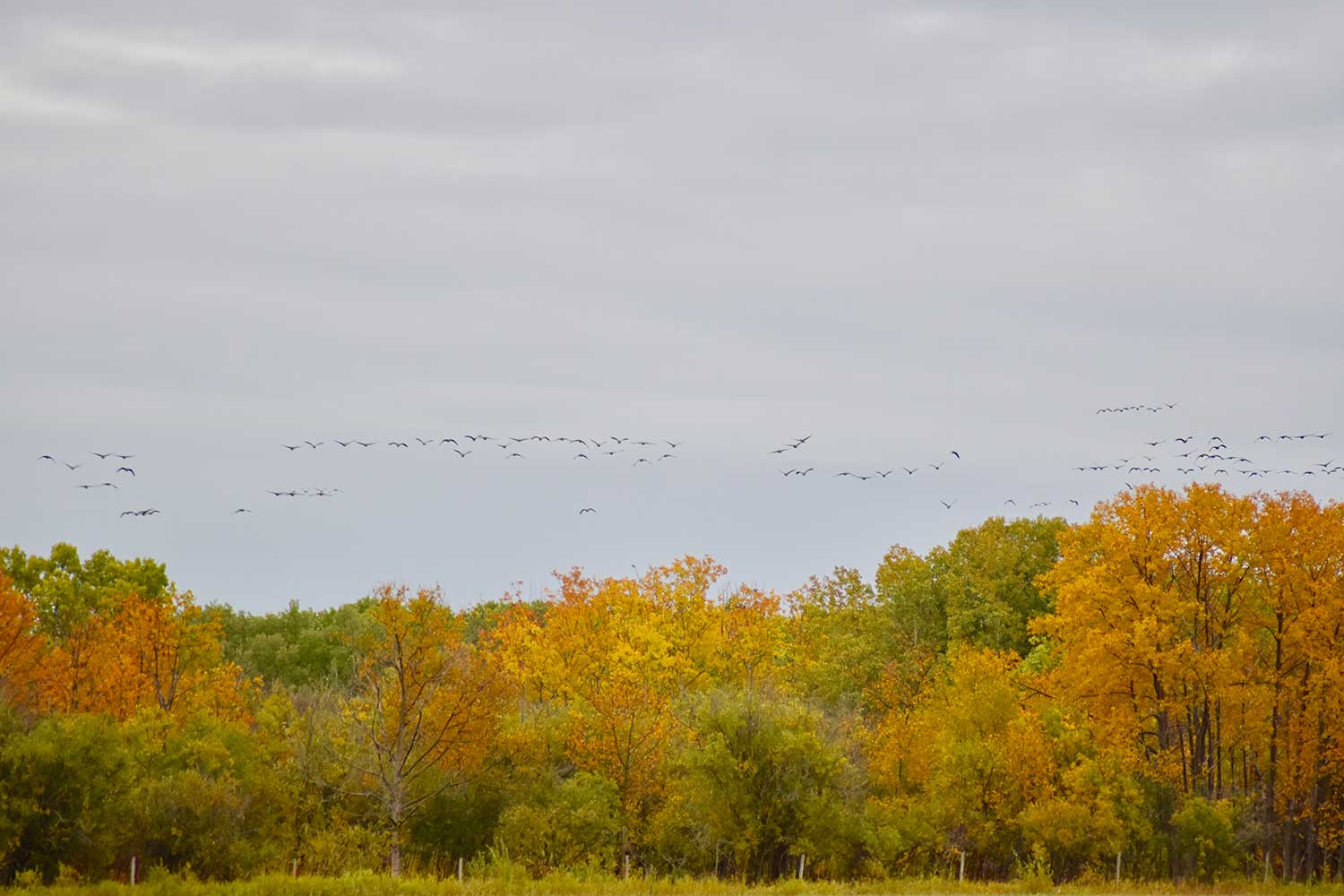
Admittedly, there’s not much majesty in pass shooting. It’s often seen as a lesser form of hunting by those waterfowl purists who are obsessed with getting ducks and geese feet-down over the decoys. It takes a tremendous amount of skill to set a rig, call, and get birds in close. But that’s not the only way to hunt waterfowl, and pass shooting gets the job done just the same as a conventional hunt. Also, if traditionalists who hunt over decoys are honest with themselves, some of the shooting they do is pass shooting, particularly on divers or sea ducks or teal. Most times those ducks are just rocketing through the longlines or past spinning-wing decoys.
To pass shoot successfully, you have to find an area birds are flying over (within shotgun range), and set up there. You wait for birds to pass by and then shoot—hence the term “pass shooting.” It’s a great way for beginners, who can’t afford all the gear it takes to hunt waterfowl, to enter the sport without much of a financial commitment. You will have to spend time scouting, take into consideration the number of other hunters in the area, and how close you are shooting birds in proximity to the roost (which are all good things to learn for any type of waterfowl hunt). If you don’t think about such details, you will 1) not kill any birds, and 2) piss a bunch of people off. You want to avoid both of those outcomes, so here are a few tips to put more ducks and geese on the strap come fall.
1. Tactics You Need to Avoid
I would be remiss if I didn’t say that you need to pass shoot cautiously. Waterfowlers are oftentimes hunting in condensed areas, thus several groups of hunters are chasing many of the same birds. Don’t screw up other hunters with your pass shooting tactics. So if you have access to an area where big groups of birds are flying right off the roost in the morning, don’t set up there and start blasting away. It’s going to put too much pressure on a large number of birds and push them out of the area, or at a minimum, get the birds all up at once. That’s not fair to the folks hunting around you who have invested money in decoys, leased up property, or burned gas scouting and door-knocking for access.
The same rules apply for levee hunting. Many public and private hunting areas are leveed off to control water, and it’s a jerk move to just walk out on one of them and shoot birds as they fly over if you are sharing the place with other hunters. They’ve gotten up early, taken time off work, or secured permission from their significant other to leave the kids at home and spend a morning with buddies in the marsh. Don’t ruin that experience for them by stumbling down the levee at prime time and blasting away at any bird that flies by.
Be cognizant of all the hunters around you, and mindful of your impact on their hunt. The loudest argument I hear from anti-pass shooters is pass shooting screws up the hunt for everyone else…so don’t do that.
2. Two Ways to Become a Better Pass Shooter
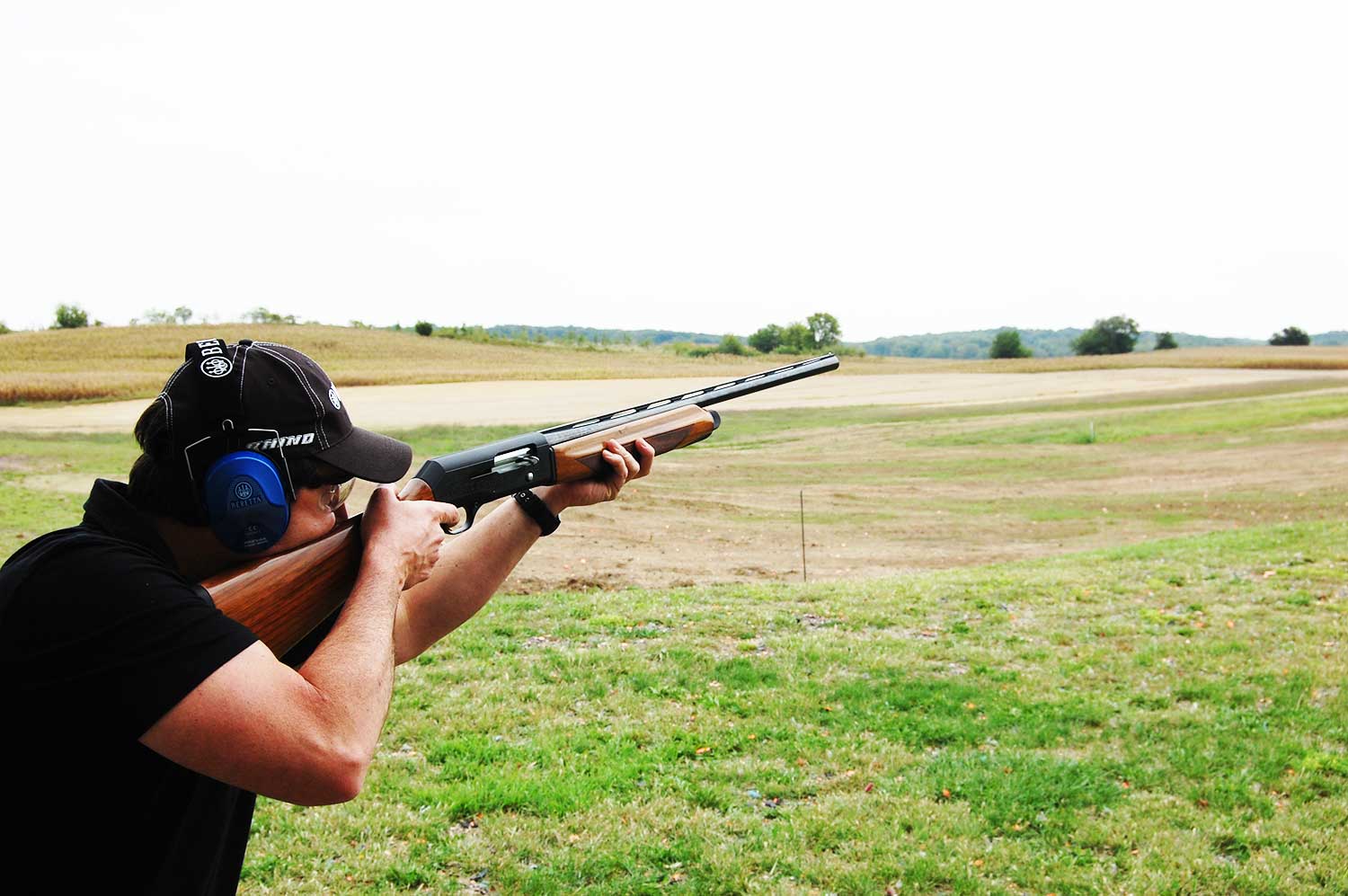
To become a proficient pass shooter, you need practice, and the best way to do that is by spending time at the skeet field and dove hunting. Head to the range and shoot as many rounds of skeet as you can. Sporting clays and five-stand are also excellent options, but nothing makes you a quicker (and more accurate) shot on passing birds than skeet. The clays are traveling fast and each station replicates a pass shot. I like to spend time on stations 2, 3, 4, 5, and 6 in particular. That’s not always possible when you are shooting with a crowd, but if you can find an open field and go with a buddy, burn a few extra shells at those spots. Don’t bother with trap. It’s good practice for upland hunters, but none of those presentations will help much in pass shooting.
Dove hunting is the ultimate pass shooting pursuit. Doves do decoy if you have a spinning-wing decoy, but mostly, they are flying by. They are small and speedy, and if you can shoot a dove with any amount of consistency, then ducks and geese will seem far easier. Barn pigeons are a good option too, and you can shoot those any time of year. All you need to do is place yourself between a grain silo and a water source or gravel road, and there’s a good chance to get in some practice. They also make a damn good meal.
3. Find a High Point
One of the best places I ever pass shot geese was on a hilltop overlooking a large lake. I hunkered in some brush (which is key—you have to be concealed) and shot local Canada geese straight up—the best way to kill big honkers in my opinion because they are such hardy birds, especially when those late-season down feathers plume. The birds had been flying that pattern for years, and I would see them in spring and summer while jigging for crappie on the pontoon boat. Finally, one September with no other access for early goose season, I decided to set up on the birds. It worked out as planned with a few geese coming in range. It was on private property, so if a bird fell into the water below, I just jumped on the ATV and drove to the boat dock and fired up the outboard to retrieve it. Bluffs and hilltops get you closer to birds, but the one drawback is ducks and geese are likely going to fall out of the sky and down the hill, or in my case, into the water. But as long as you can retrieve the dead birds, it’s ethical.
4. Gaps in the Treeline Work
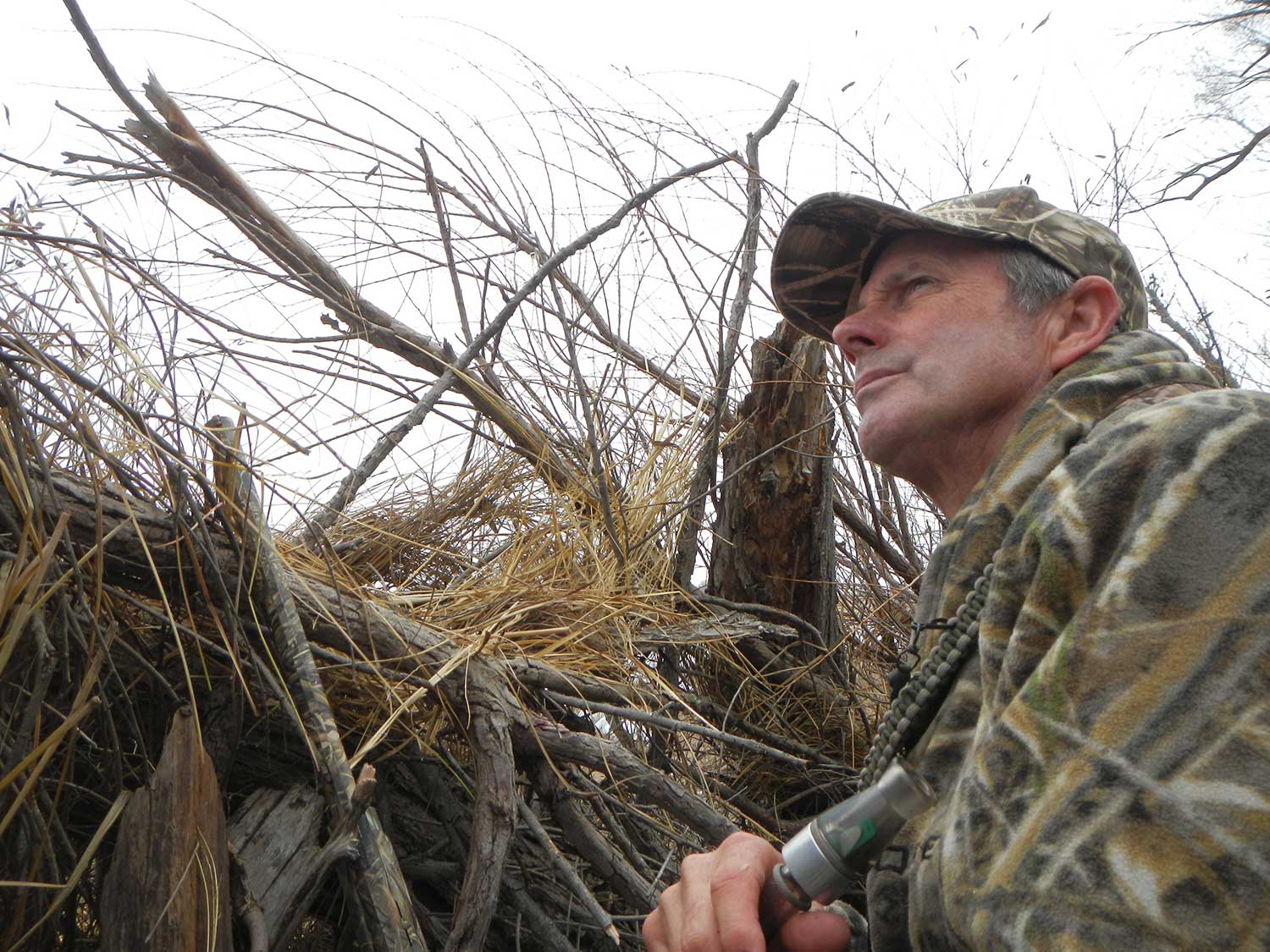
For a long time, I’ve noticed when mallards or big Canada geese are flying to the field they want to feed in, they often take a fairly direct route (this isn’t as common with lesser Canadas, specklebellies, and snow geese). Finding a treeline that birds are flying over or a gap they are flying through is a good bet to shoot a few. Birds will even find small dips in the woods, where the trees are not as tall, to wing over. Treelines are ideal because you can walk them without birds seeing you (if you’re stealthy), so it allows you to be more mobile.
You can also use a call to lure birds closer, and shoot a few more. A quick example … Several years ago a few friends and I were bamboozled into leasing a goose pit that honkers never trafficked. But the geese would fly up and down the timber line in our field, so we ended up doing a bunch of pass shooting that season. The calls would sometimes pull curious birds over us.
5. Target Wood Ducks
As long as it stays reasonably warm, there are almost always a few wood ducks around (and least in many flyways). So while the weather remains balmy, find a treeline near an overflow or small river—they are ideal spots to shoot woodies. I like to slide down the bank (if there is one) and stand with my back against it. That breaks up my 6-foot-4 frame, and since the hunt is only going to last until sunrise (woodies aren’t going to fly much after that), there’s no reason to conceal myself any further. Just be ready, because it’s going to be low-light and wood ducks are damn fast. Look for swamps too—I’m talking muddy, gross waters no sane person would ever want to set foot in. Woodies love them. The more green moss on top of the water and deadfalls, the better.
Also, if you have access to a farm that has a couple ponds surrounding timber, you can go into the woods and shoot woodies in the first 30 to 40 minutes of shooting time. My brother found a spot during spring turkey season the birds were moving through, bouncing from one body of water to another, and we went back in there when duck season opened for a dry ground “timber” hunt. It was insanity, and we hardly cut a feather the first outing, but after figuring out their travel corridors, we each took limits.
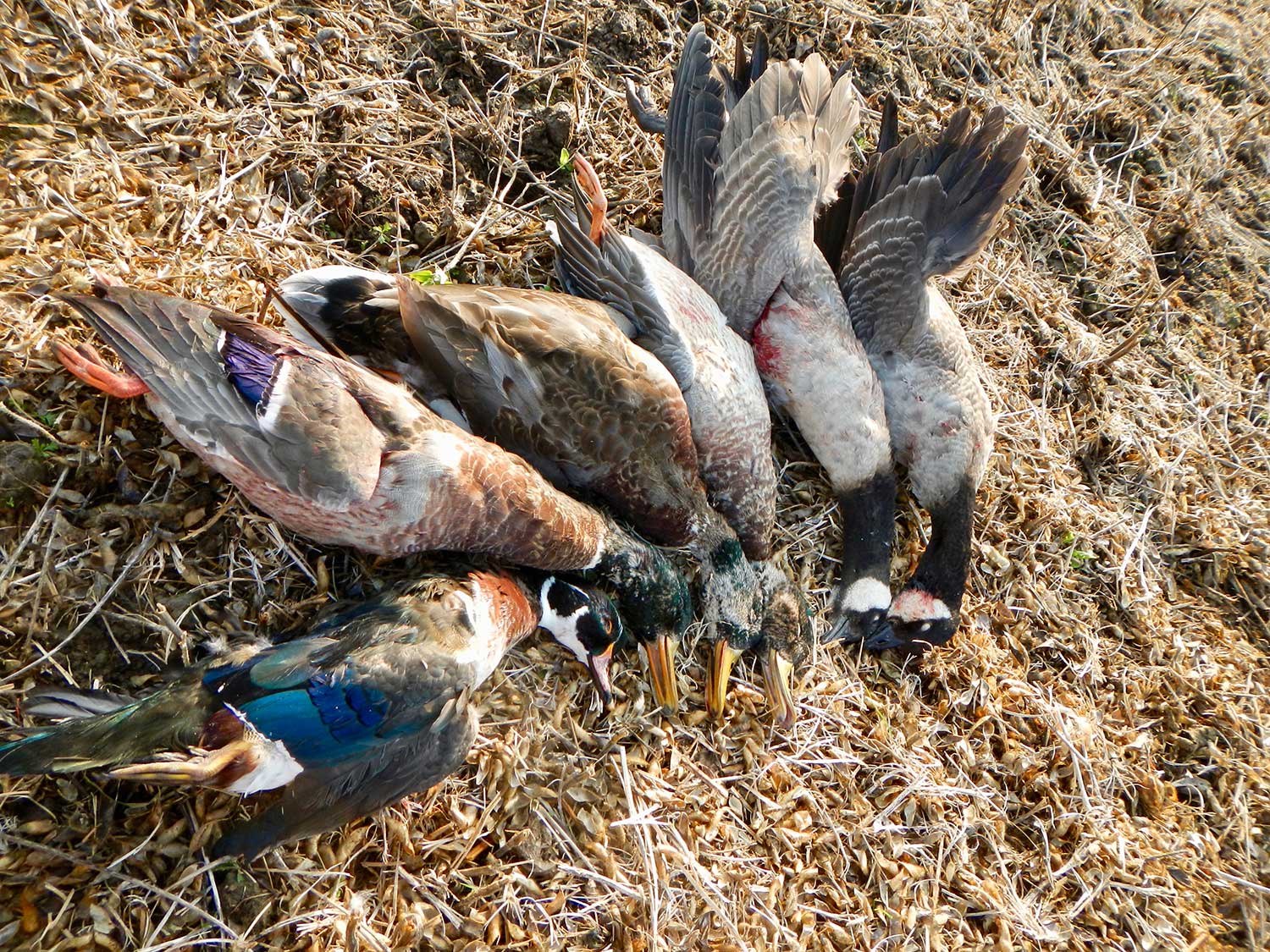
6. Look for Well-Traveled Points
On big lakes, watersheds, and rivers there are fingers of land that jut out into the water, and these are perfect places to intercept ducks. For one reason, ducks congregate/loaf near these geographic locations. But it also allows you to get closer to birds that are traveling rivers. You can take a layout blind, brush it up, and hunt from it, or lay on the ground with a ghillie blanket and use your blind bag for a headrest. It can turn into a really cool experience, because it’s more likely there will be multiple species passing by. You can shoot all manner of divers and dabblers this way, and maybe luck into a few honkers.
Read Next: 9 Migratory Bird Laws You Didn’t Know
7. Bottlenecks Are Ideal
A few years ago, I was hunting a tidal marsh for brant on Long Island, New York, and we set up on an island. To our left was a landfill, and in between was a channel. The brant hunt was over fairly quick, but I stuck around with my buddies for another hour. For about 30 minutes, we shot bluebills, mallards, and a merganser. The birds would peel around a corner and had two options: head for open water or turn into this pinch point between us and a massive collection of garbage from the Five Burroughs. Every time they chose the channel, flying fast and low. We could see our pellets skip across the water, sometimes shooting feet behind them, but sometimes connecting. Bottlenecks like these force birds into a smaller area and closer to you. Find them, and they can result in a sporty shoot.
8. Use the Harvest to your Advantage
There’s nothing more coveted by a Midwestern pass shooter than a field full of hay bales that honkers are trafficking. Basically what you do is find a field geese are feeding in or flying low over, and roll hay bales to the spots you anticipate birds are going to be. If the flight routes change, just roll the bales to another spot (or walk to another bale) in the field. This practice is best done in the early August-September goose season because you can target juvenile geese that have never been hunted, and there likely won’t be a ton of competition from other hunters (depending on where you are located). The ideal setup is to have a hay field birds are coming to directly off the night roost. Young birds are more likely to fly in straight lines, which makes them more predictable.
Standing sweet corn is also a great place to intercept early-season geese. As farmers pick fields and honkers find the waste grain, it’s a perfect time for you to take advantage. Find a field that’s been cut and birds are feeding in and then get in sweet corn that hasn’t been harvested (field cornstalks will likely be too high by then, but it might work if you hide in the first row or two) the birds must fly over to get to the feed. You can walk the rows and get under birds as they come to the cut field.

